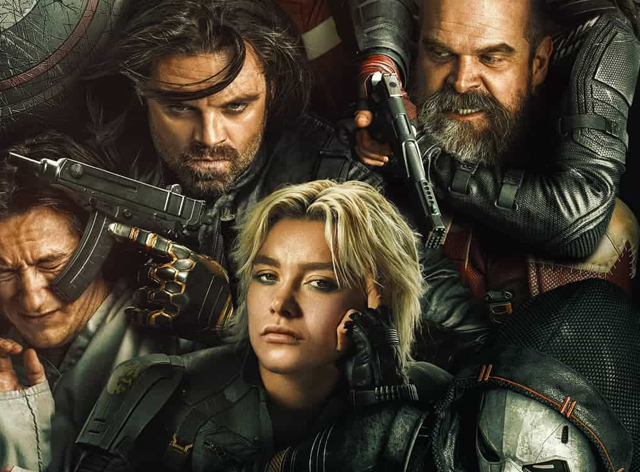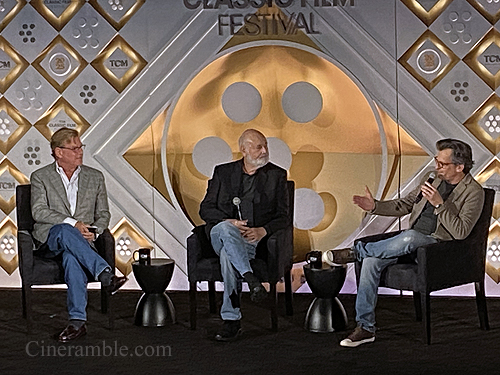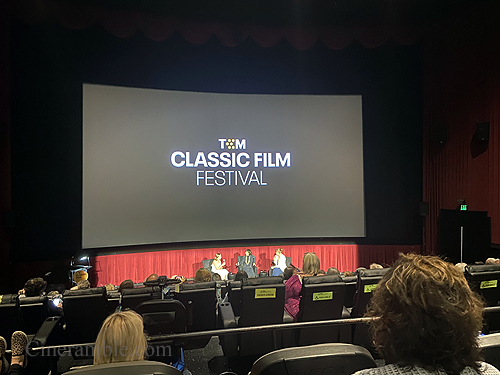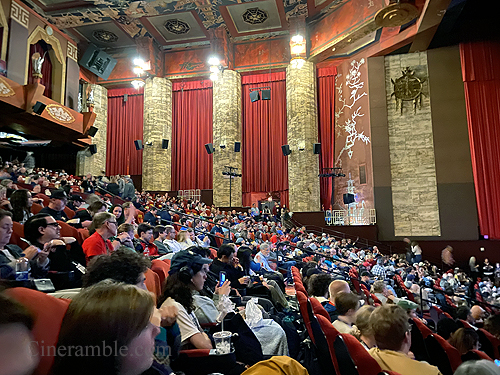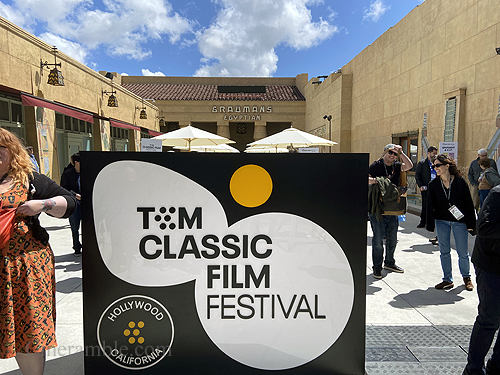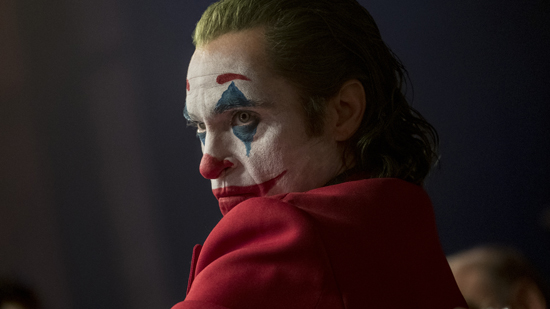
It’s very difficult for any franchise to maintain stamina to last more than a decade, let alone several. Even rarer is a franchise that has managed to get even better as it goes along, and rarest of all, do so with it’s main attraction still capable of delivering in every outing. One such franchise that has continued to age like wine over the course of nearly 30 years is the Mission: Impossible series. Based on the TV series that ran from 1966-73 made it’s jump to the big screen in 1996, though less so as a direct translation and more as a starring vehicle for an A-list star, in this case Tom Cruise. What helped to set Mission: Impossible the movie apart was the way that Mr. Cruise threw so much of himself into the action scenes in the movie. The series would come to be defined as a whole by it’s groundbreaking use of stunts, many of which involving Cruise himself. And with each new film, it became a game of upping the ante with what they could do. Each new Mission: Impossible had at least one standout stunt sequence that for a lot of people would be like nothing they’ve ever seen before. And for an adrenaline junky like Tom Cruise, each of these movies allowed him more opportunities to do what no other actor or stunt man for that matter had ever attempted on screen before. This includes scaling the outside of the Burj Khalifa in Ghost Protocol (2011); hanging onto the side of a real airplane as it takes off in Rogue Nation (2015); or piloting a helicopter solo through a narrow canyon in Fallout (2018). Because of all of these iconic action scenes, this has become the identity of the franchise, leaving the original series as a distant memory; save for the memorable theme song that still is a big part of the franchise. But one has to wonder, after 30 years of raising the bar with each film can Tom Cruise and company still deliver on that same level? Or is the series inevitably going to hit it’s breaking point, especially with Cruise now reaching his sixties.
There seems to be a feeling that Tom Cruise is starting to prepare to say goodbye to what has been his signature franchise. And to bring the series to a close, he’s delivering not one but two films. The plan was to make a grand two part finale, with each film released a year apart. The problem is that a lot didn’t go according to plan during the making of the film, which also extended into the release as well. The pandemic shut down filming on the first part of the series for several months. Cruise tried his best to get production up and running again, including adopting strict Covid guidance measures on his film set. But even while the production was on hold, he was still making sure his crew was being taken care of, which included paying them all through the delays. While this was a noble gesture on his part, it also ballooned the budget significantly. The first part also had to sit on the shelf until 2023, so that it wouldn’t conflict with Tom Cruise’s other big blockbuster, Top Gun: Maverick (2022). But once it did make it to theaters, it unfortunately suffered a case of awful timing. It’s late July release just so happened to fall mere days after the Barbenheimer phenomenon, and it got completely drowned out by the dual blockbusters of Barbie (2023) and Oppenheimer (2023). Not only that, but it also released just as the WGA and SAG-AFTRA strikes were starting, meaning that the actors could not go out to help promote the film as well. As a result, Mission: Impossible: Dead Reckoning – Part One (2023) became a very expensive underperformer at the box office and a significant money loser for parent studio Paramount. Considering that there still was one more movie left to go for this franchise, the studio was at a crossroads about how to do after this disappointment. It was decided to put some more distance between Part One and Two, with the latter being pushed back another year. Also, the studio also decided to drop the Part Two moniker on the title. The second movie would now be called Mission: Impossible – The Final Reckoning, and would get a prime Memorial Day release, which is also when Top Gun: Maverick hit theaters. Despite all of the changes and production turmoil, there is still a lot of excitement surrounding what may be the final film in this franchise. The only question is, does this Mission end with a bang or does it self-destruct.
The film opens a few years after the events of Dead Reckoning. A rogue AI program named “The Entity” has been infiltrating vast stretches of the world wide web, with many government agencies worried that they are next. But, there is hope that someone may one day gain access to the source code of The Entity and contain it’s power for good. The source code however was last traced to a Russian submarine named the Sebastopol, which sank over a decade ago. The only key known to unlock the source code’s location was retrieved by IMF agent Ethan Hunt (Tom Cruise) and his team. Their goal is to find the location of the submarine and use a poison pill algorithm on a hard drive to neutralize The Entity before it reaches the world’s nuclear arsenals. But, Hunt’s team faces a major hurdle when a past foe, Gabriel (Esai Morales) manages to steal the poison pill drive from them. Now Hunt and his fellow agents must track down Gabriel while also searching for the Sebastopol’s whereabouts, and to complicate matters even more, the governments of the United States and Russia are also pursuing their own ends to stop The Entity, with a nuclear option on the table. Ethan is granted a 72 hour window by President Erika Sloane (Angela Bassett) to find the submarine and neutralize the Entity. But it calls for his accomplices, tech wizards Benji (Simon Pegg) and Luther (Ving Rhames), master pickpocket Grace (Hayley Atwell), and former ally of Gabriel named Paris (Pom Klementieff) to be at the right place at the right time, putting all of their lives on the line. Meanwhile, they are also facing interference from other government agents like Secretary Kittridge (Henry Czerny) and Captain Briggs (Shea Whigham) who are more skeptical of Ethan’s tactics. With time running short and facing mounting pressure from all sides, including the wrath of an all seeing AI presence, will Ethan Hunt manage to save the world from the brink of destruction once again? Or is it one mission too much to handle for even him?
When you go into a Mission: Impossible movie, you more or less know what you are getting yourself into. This is a franchise that has prided itself on pushing the envelope to the extreme. But after 30 years, does this franchise still have the ability to deliver something that we haven’t seen done on film anymore? I was starting to doubt this myself after watching the last film. While I still though Mission: Impossible – Dead Reckoning was a really good movie overall, I was a tad bit underwhelmed as well. There was a lot of hype surrounding the signature stunt of the film, which involved Tom Cruise riding a motorcycle off of a cliff, with a camera following tightly behind him to get that money shot looking straight down into the abyss below. It’s a cool stunt, but I felt that it was a bit over-hyped because seen in context with the rest of the film, it just doesn’t come off as particularly harrowing. The more impressive scene came later, with an extended train crash segment, but by that point, I felt that the movie was fairly lacking in overall tension. Which made me worry about how they were going to follow this up in Part Two. Has the franchise truly run out of steam? Well, I am happy to report that it in fact has not. The Final Reckoning is a major step up from Part One of this franchise finale. While Dead Reckoning felt unengaging, I can definitely say that Final Reckoning put me on the edge of my seat multiple times throughout the lengthy run time of the movie. It’s still not perfect, and it does fall a bit short of the franchise at it’s best, but it’s still among my favorite films in this long franchise. the movie’s most glaring problem is that it takes it’s time in the first act to get things going, with some rather clunky exposition to get us up to speed. But once it hits the halfway mark when Ethan sets off on his mission, the movie grabs a hold of us and takes us for a ride. The last hour and a half of this nearly three hour movie is Mission: Impossible at it’s very best, and of course, one of the big reasons for that are the signature action sequences.
This movie has two of what I think are not just among the best action sequences in this franchise, but perhaps among the best ever done in all of cinema. One is an extended sequence where Ethan Hunt reaches the Sebastopol submarine that lies deep on the ocean floor. The way they filmed this sequence is just extraordinary. It uses just the right amount of CGI effects mixed in with some impressive in camera work on a real flooded set. There’s something that they do with the water level in this sequence that is really impressive when you see it in the movie. It’s not a difficult technique to do, but when executed as well as it is in this movie, it becomes a really great visual that immerses you into the scene perfectly. I also have to commend the sound design from this scene as well. If you watch this movie in a theater with a high quality sound system, you are going to inundated with all of the metallic roaring of the submarine wreckage as it grinds down on the ocean floor and all of it’s weaponry starts banging around in it’s hull. And it’s a sequence that Tom Cruise largely has to carry on his own, mostly without dialogue. This was a definitely highlight of the movie for me, but it’s not the only one that stands out in the film. The one that you see plastered all over the advertising of the movie, involving the duo biplanes is also a worthy action sequence living up to the high bar of this franchise. I for one would love to learn just how much of this sequence involved Tom Cruise really hanging off of the wing of one of these planes in mid-air. There are a couple shots that are undeniably the real deal, of course with the necessary safety harnesses either hidden or digitally erased. Even still, the fact that Tom Cruise would endure high speed winds, excessive g-forces, and any other dangerous possibilities involved with flying a plane just to get those in camera shots is beyond belief. I cannot think of any other actor who pushes his own body to the limit like he does, all for the sake of making this stuff look as real as possible.
Though the series has run for a total of 8 films, the last half has only had one directorial vision behind it. Cruise has found a trusted creative partner with Writer/Director Christopher McQuarrie. McQuarrie has been the one whose guided the franchise through it’s latter stage, which has been driving the franchise more towards spectacle than style. It’s not a bad thing for this franchise to lose some directorial panache along the way. While the franchise did attract some big name filmmakers like Brian DePalma and John Woo initially, their directorial styles didn’t quite standout as well as they should. If anything, the directors in this franchise have had less input on the visuals overall, with Tom Cruise as the star and producer being the chief creative force overall. Eventually, he decided he would rather have a director that more or less comfortable conforming to his vision rather than their own. And McQuarrie is a competent enough filmmaker that he actually fits well as the steward of this franchise. For this film, I actually feel like he proved to be a bit more than just competent. There are some striking visuals in this movie, including a truly breathtaking one where Ethan Hunt comes into contact with the polar ice cap, and it shows a great deal of confidence McQuarrie has now behind the camera. It was shots like that that I felt were missing from the last film, which was a fairly basic looking film for this franchise, though not as bad as my least favorite film in the series, Mission: Impossible III (2006). McQuarrie’s only misstep with this movie is a bit of the writing. The film, like I mentioned before, does have a difficult time getting started, and it does feel like McQuarrie was perhaps a little overwhelmed by the task he had to perform, which was to not just follow-up the story from the last film, but to wrap everything up from the franchise as a whole. There’s a fair amount of the movie throwing quick edit montages at you just to refresh your memory of all the key moments from all the previous seven films in the series so that you don’t get lost in the plot. It’s clunky, but thankfully it doesn’t last far into the film. Like I said before, once the movie enters it’s second half, that’s where the film gets really good.
The movie also thankfully still devotes enough time to it’s cast as well. Sure Tom Cruise is the main draw, but there’s a generous amount of time devoted to getting us to like all of the other team members there to help him. I especially like that Ving Rhames still makes an appearance here. Apart from Cruise, he’s the only other actor to appear in all 8 movies. And you can tell that Cruise was more than happy to have him back every single time. It’s a 30 year friendship that very much translates into the film. Simon Pegg is also a lot of fun to watch here, bringing a nice bit of levity to the film through his great comedic instincts. Hayley Atwell, who joined the cast in the last film, also gets more to do, and she brings a nice bit of innocent curiosity to the film, especially when she’s confronted with the sometimes absurd plans that Ethan’s team asks her to participate in. I also enjoy seeing the who’s who of character actors that Tom Cruise brings in to play all of the government brass that either are on his side or think he’s completely crazy. There’s also a surprise addition to the cast that harkens back all the way to the franchise’s origins that I thought was fun to see appear here. The one part of the cast that unfortunately came across as the weak spot in this movie was Esai Morales and the villain Gabriel. The actor is fine, but the character is just too dull and uninteresting to work as a formidable villain. Even the movie seems to forget about him, as he disappears for I’d say a good hour of the film’s run time. To be honest, The Entity works much better as a villainous presence in the film. It has this “eye of Sauron” like mystique to it, and you can definitely feel it’s influence over everything in the plot, even if it’s not physically shown on screen. A lot of the tension in the movie comes from the fact that they only have the tiniest of windows available to them to contain this thing, which makes it a foe worth fearing, especially when it has the power to destroy the world. But, of course the main attraction remains Cruise himself, and he does not disappoint. I still love the fact that he’s not afraid to show Ethan Hunt’s more vulnerable side. Hunt doesn’t always do everything smoothly, and he often comes away bruised and bloodied. The franchise could’ve easily turned Ethan Hunt into an invincible super hero, and instead the movie thankfully shows that he’s a man who gets the job done, even if mistakes and injuries happen along the way. It also gives the character a much needed humorous side when things don’t always go to plan, which Cruise plays perfectly with his hilarious dumbfounded look in certain scenes.
So, is this truly the end of the road for the franchise? I don’t think that Mission: Impossible the brand will ever be laid to rest, because it’s just too valuable to Paramount, especially with it’s future merger partner Skydance being the production outfit behind the franchise. But, Tom Cruise as it’s poster boy star may be nearing it’s end. Cruise has pushed his body for a long time and has proven to be remarkably in peak physical form even into his sixties. But, Father Time catches up to us all, and it’s going to get to a point soon where Tom Cruise will be too old to do these kind of death-defying stunts anymore. Even still, there’s enough left open even at the end of this movie to signal more adventures down the road. It’s just too early to tell if Tom Cruise is truly done with Ethan Hunt right now. If he is, then he should feel pretty proud of himself because he closes out his time in this franchise with a banger. I would say that this is probably my third favorite film in the series, behind only Ghost Protocol and Fallout. The former was the most well-paced and visually inventive of the series, while the latter had the best stunts and the best villain of the series, with Henry Cavill’s memorable baddie. For The Final Reckoning, I would say that it falls just shy of the others because of it’s clunky opening, but it features two of the best action sequences of the series as a whole. That submarine sequence alone is a true work of cinematic art. At 170 minutes in length, it is definitely the longest film in the series, but you won’t be bored by any of it. It does exactly what the best action film should do, which is to grab a hold of you and put you on the edge of your seat. One thing that I would like to see Cruise do though after making a film like this is perhaps return to more dramatic work. I know he feels at home in action movies, but he’s also a three time Oscar-nominated actor as well, and I would like to see him return to that too. Maybe that might be in the cards for him, as Final Reckoning feels like a bit of a parting gift to a franchise. We’ll see if that is the case or not, but if this is the end for Cruise’s time as Ethan Hunt, than it’s a finale worth feeling proud about. Overall, this is undoubtedly a mission very much worth choosing to accept.
Rating: 8.5/10







